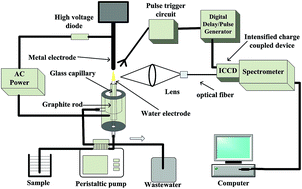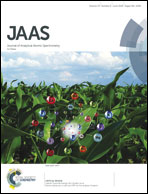Time-resolved emission spectroscopy and plasma characteristics of a pulsed electrolyte cathode atmospheric pressure discharge system
Abstract
Herein, a pulsed electrolyte cathode atmospheric pressure discharge (pulsed-ECAD) system was developed as a radiation source for the atomic emission spectroscope (AES) for metal element determination in aqueous solutions. The time-resolved emission spectra of the pulsed-ECAD were obtained at various frequencies, and their evolution behaviours during the modulation period were found to exhibit a strong dependence on the modulation frequency. The temporal behaviors of the metal element spectral intensities of K, Na, Li, Rb, Sr, and Mg as well as the atomic and molecular species emissions originating from water and air (OH, Hα, Hβ, N2, and O) were characterized from the plasma. The temporal evolutions of the pulsed-ECAD plasma parameters, including the rotational temperature, electron density, and ionization temperature, were analyzed. The results showed that the rotational temperatures varied between 950 K and 1350 K. The electron density and ionization temperature ranges of Mg were from 4.3 × 1014 to 2.2 × 1015 cm−1 and from 5200 K to 5500 K, respectively.



 Please wait while we load your content...
Please wait while we load your content...